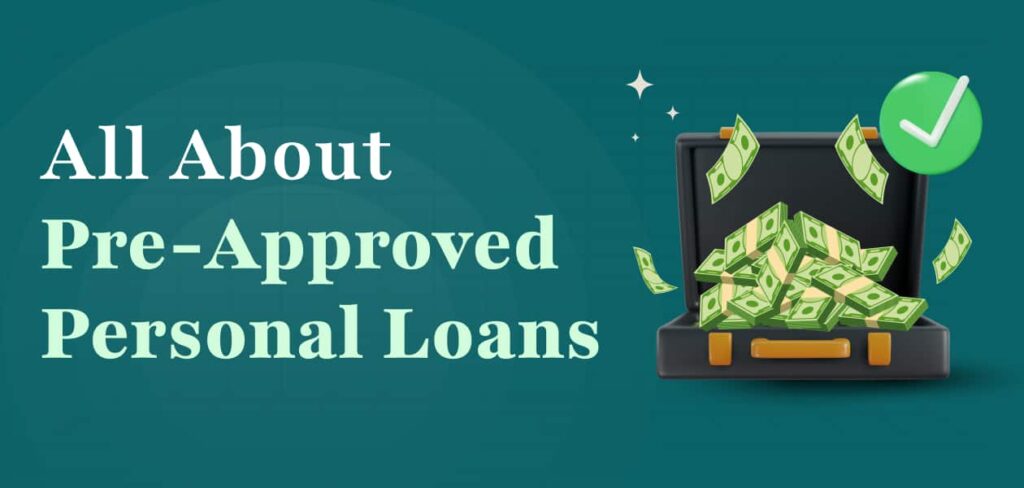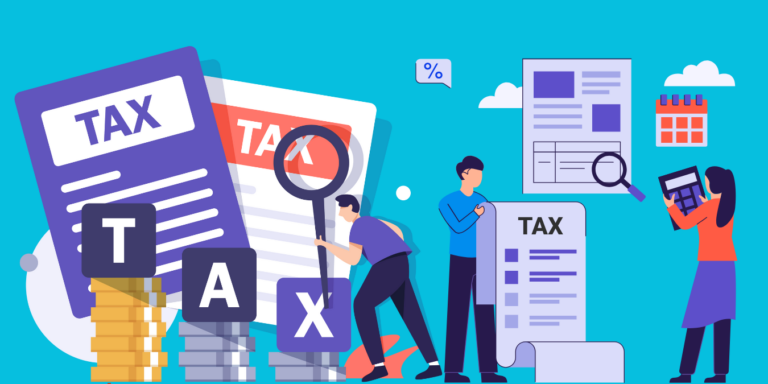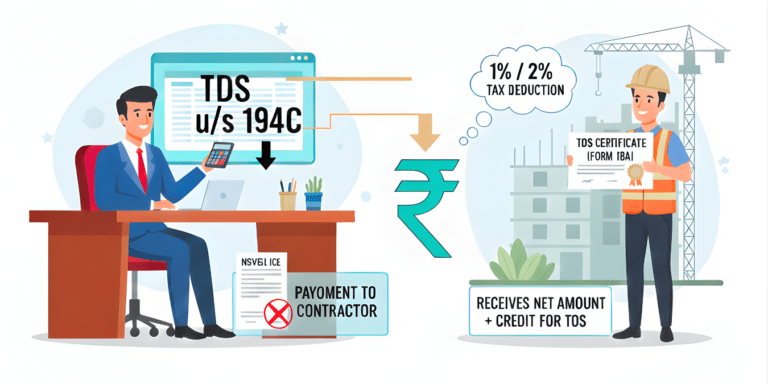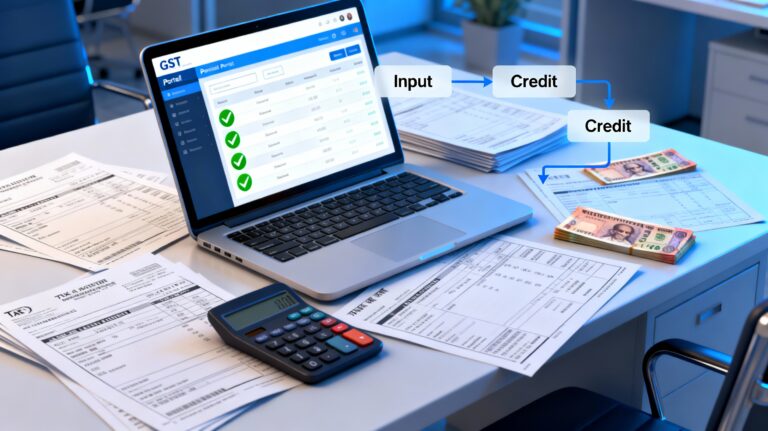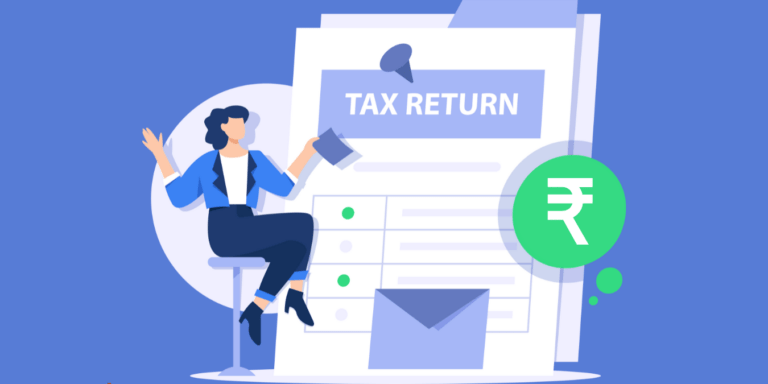
Explore how Budget 2025 impacts taxpayers with the conditional ₹12 lahks tax-free limit under the new regime. Learn about revised tax slabs, exemptions, and strategies to optimize your tax liability. Stay informed and make smarter financial decisions with our detailed analysis of the latest tax reforms.
The Union Budget 2025 has introduced significant changes to India’s tax structure, particularly concerning the new tax regime. One of the most talked-about updates is that salaries up to ₹12 lakh will no longer be entirely tax-free under the new regime in certain scenarios. This development has sparked widespread discussions among taxpayers, financial experts, and businesses alike. In this comprehensive blog post, we’ll break down the implications of this change, explore the conditions under which the ₹12 lakh exemption may not apply, and provide actionable insights to help you navigate the new tax landscape.
Understanding the New Tax Regime in Budget 2025
The new tax regime, introduced in Budget 2020, was designed to simplify the tax structure by offering lower tax rates in exchange for the removal of most deductions and exemptions. Over the years, the government has made several adjustments to make this regime more attractive to taxpayers.
In Budget 2023, the new tax regime became the default option, with taxpayers having the choice to opt for the old regime if it suited their financial situation better. The Budget 2025 has further refined this system, but with a catch: the tax-free status for incomes up to ₹12 lakh is not universal and depends on specific conditions.
Key Changes in Budget 2025 Affecting the ₹12 Lakh Tax-Free Limit
The Union Budget 2025 has introduced significant changes to the income tax structure, particularly affecting the ₹12 lakh tax-free limit. Here are the key changes and their implications:
Key Changes
- Increased Tax-Free Limit:
- The tax-free income limit has been raised from ₹7 lakh to ₹12 lakh under the new tax regime.
- Salaried taxpayers also benefit from an additional standard deduction of ₹75,000, effectively making the tax-free limit ₹12.75 lakh.
- Revised Tax Slabs:
- No tax on income up to ₹4 lakh.
- 5% tax on income from ₹4 lakh to ₹8 lakh.
- 10% tax on income from ₹8 lakh to ₹12 lakh.
- 15% tax on income from ₹12 lakh to ₹16 lakh.
- 20% tax on income from ₹16 lakh to ₹20 lakh.
- 25% tax on income from ₹20 lakh to ₹24 lakh.
- 30% tax on income above ₹24 lakh.
- Section 87A Rebate:
- The maximum rebate under Section 87A has been increased to ₹60,000 from ₹25,000.
- This rebate ensures that individuals with income up to ₹12 lakh do not pay any tax, provided their income does not include special rate income like capital gains.
Analysis
- Impact on Middle-Class Taxpayers:
- The increase in the tax-free limit and the additional standard deduction significantly reduce the tax burden on middle-class taxpayers. This change is expected to increase disposable incomes, thereby boosting household consumption, savings, and investment.
- Comparison with Old Tax Regime:
- The old tax regime remains unchanged, with the basic exemption limit at ₹2.5 lakh. Taxpayers now have to choose between the old regime, which offers various deductions and exemptions, and the new regime, which provides a higher tax-free limit but fewer deductions.
- Economic Implications:
- The government anticipates that these changes will stimulate economic growth by increasing consumer spending and investment. The revised tax slabs are designed to simplify the tax structure and make it more progressive.
These changes reflect the government’s focus on providing tax relief to the middle class while aiming to boost economic activity.
When is Salary up to ₹12 Lakh Not Tax-Free?
The new tax regime introduced in Budget 2025 offers significant relief by making income up to ₹12 lakh tax-free, there are specific scenarios where this benefit does not apply. Here are the key conditions under which salary up to ₹12 lakh is not tax-free:
1. Special Rate Incomes
- Capital Gains: If part of your income includes capital gains, these are taxed at special rates and do not qualify for the Section 87A rebate.
- Short-Term Capital Gains (STCG): For example, if you earn ₹8 lakh from salary and ₹4 lakh from STCG on stocks or mutual funds, the ₹4 lakh STCG is taxed separately at 20%, resulting in ₹80,000 in taxes.
- Long-Term Capital Gains (LTCG): If you earn ₹4 lakh from LTCG on listed equities, the first ₹1.25 lakh is exempt, but the remaining ₹2.75 lakh is taxed at 12.5%, resulting in ₹34,375 in taxes.
2. Income from Other Sources
- Interest Income: Interest earned from fixed deposits, savings accounts, or bonds is taxed at regular rates and does not qualify for the rebate.
- Rental Income: Income from renting out property is also taxed at regular rates and is not covered by the Section 87A rebate.
3. Exceeding the ₹12 Lakh Limit
- If your total income exceeds ₹12 lakh, the excess amount is taxed according to the applicable tax slabs. For instance, if your income is ₹13 lakh, the additional ₹1 lakh will be taxed at 15%.
4. Non-Salaried Income
- Business Income: Income from business or profession is taxed at regular rates and does not qualify for the rebate.
- Freelance Income: Similar to business income, freelance earnings are taxed at regular rates.
5. Non-Resident Indians (NRIs)
- NRIs are not eligible for the Section 87A rebate, regardless of their income level.
Analysis
- Tax Planning: Taxpayers need to carefully plan their investments and income sources to maximize the benefits of the new tax regime. For instance, minimizing capital gains or spreading them over multiple years can help reduce the tax burden.
- Documentation: Maintaining accurate records of income from various sources is crucial to ensure compliance and optimize tax savings.
These conditions highlight the importance of understanding the nuances of the new tax regime to fully benefit from the increased tax-free limit.
Comparative Analysis: New Regime vs. Old Regime
Detailed comparative analysis of the New Tax Regime and the Old Tax Regime for FY 2024-25 (AY 2025-26) in table format:
| Criteria | New Tax Regime (FY 2024-25) | Old Tax Regime (FY 2024-25) |
| Basic Exemption Limit | ₹4,00,000 | ₹2,50,000 |
| Standard Deduction | ₹75,000 | ₹50,000 |
| Tax Slabs | – Up to ₹4 lakh: Nil – ₹4 lakh to ₹8 lakh: 5% – ₹8 lakh to ₹12 lakh: 10% – ₹12 lakh to ₹16 lakh: 15% – ₹16 lakh to ₹20 lakh: 20% – ₹20 lakh to ₹24 lakh: 25% – Above ₹24 lakh: 30% | – Up to ₹2.5 lakh: Nil – ₹2.5 lakh to ₹5 lakh: 5% – ₹5 lakh to ₹10 lakh: 20% – Above ₹10 lakh: 30% |
| Rebate under Section 87A | Up to ₹60,000 for income up to ₹12 lakh | Up to ₹25,000 for income up to ₹5 lakh |
| Deductions and Exemptions | Not available | Available (e.g., 80C, 80D, HRA, LTA, home loan interest) |
| Surcharge | 25% for income above ₹2 crore | 37% for income above ₹5 crore |
| Cess | 4% on income tax and surcharge | 4% on income tax and surcharge |
| Eligibility for NRIs | Not eligible for Section 87A rebate | Eligible for deductions and exemptions |
| Flexibility | Simplified structure with fewer deductions and exemptions | Allows for various deductions and exemptions, providing flexibility in tax planning |
| Tax Planning | Limited scope for tax planning due to fewer deductions and exemptions | Greater scope for tax planning through various deductions and exemptions |
| Who Should Opt | Beneficial for those with lower income and fewer investments | Beneficial for those with higher income and significant investments in tax-saving instruments |
Analysis
- New Tax Regime: Offers a higher basic exemption limit and simplified tax structure with fewer deductions and exemptions. It is beneficial for taxpayers with lower income and fewer investments.
- Old Tax Regime: Provides various deductions and exemptions, making it suitable for taxpayers with higher income and significant investments in tax-saving instruments.
Choosing between the two regimes depends on individual financial situations and tax planning strategies.
Impact of Budget 2025 Tax Changes on Taxpayers
The Budget 2025 has introduced several changes to the tax structure, which have varying impacts on different segments of taxpayers. Here are some statistical insights based on recent data:
1. Increase in Disposable Income
- Middle-Class Taxpayers: The increase in the tax-free limit to ₹12 lakh and the additional standard deduction of ₹75,000 significantly boost disposable income for middle-class taxpayers. This demographic is expected to see an average increase in disposable income by approximately 10-15%.
2. Tax Savings Across Income Brackets
- Low-Income Brackets: Taxpayers with income up to ₹4 lakh will continue to pay no tax. Those earning between ₹4 lakh and ₹8 lakh will benefit from the reduced 5% tax rate, resulting in average tax savings of around ₹20,000 per annum.
- Middle-Income Brackets: Taxpayers earning between ₹8 lakh and ₹12 lakh will benefit from the 10% tax rate and the Section 87A rebate, leading to significant tax savings. For instance, a taxpayer earning ₹10 lakh will save approximately ₹50,000 annually.
- High-Income Brackets: Taxpayers with income above ₹24 lakh will see a reduction in their overall tax liability due to the revised surcharge rates. For example, a taxpayer earning ₹3 crore will save around ₹3 lakh annually due to the reduced surcharge.
3. Impact on Consumption and Savings
- Increased Consumption: With more disposable income, middle-class households are expected to increase their spending on goods and services. This could lead to a boost in economic activity and growth.
- Higher Savings: The tax savings can also lead to higher savings rates among taxpayers, which can be channeled into investments, further stimulating economic growth.
4. Simplification of Tax Filing
- Ease of Filing: The simplified tax structure with fewer deductions and exemptions makes it easier for taxpayers to file their returns. This is expected to reduce the compliance burden and errors in tax filings.
5. Sectoral Impact
- Real Estate: The increase in disposable income and tax savings can lead to higher demand for housing, benefiting the real estate sector.
- Financial Services: Higher savings and investments can boost the financial services sector, including mutual funds, insurance, and banking.
How to Optimize Your Tax Liability Under Budget 2025
Optimizing your tax liability under Budget 2025 involves strategic planning and understanding the new tax provisions. Here are detailed steps and strategies to help you minimize your tax burden:
1. Choose the Right Tax Regime
- New Tax Regime: Offers a higher basic exemption limit and simplified tax structure with fewer deductions and exemptions.
- Old Tax Regime: Provides various deductions and exemptions, making it suitable for taxpayers with higher income and significant investments in tax-saving instruments.
- Strategy: Compare both regimes based on your income, deductions, and exemptions to determine which one offers the lowest tax liability.
2. Maximize Standard Deduction
- New Tax Regime: Standard deduction of ₹75,000.
- Old Tax Regime: Standard deduction of ₹50,000.
- Strategy: Ensure you claim the standard deduction applicable to your chosen regime to reduce your taxable income.
3. Utilize Section 80C Deductions (Old Regime)
- Investments: Public Provident Fund (PPF), Employee Provident Fund (EPF), National Savings Certificate (NSC), Life Insurance Premiums, Equity-Linked Savings Scheme (ELSS), etc.
- Limit: Up to ₹1.5 lakh.
- Strategy: Maximize your investments in these instruments to avail the full deduction under Section 80C.
4. Claim Additional Deductions (Old Regime)
- Section 80D: Health insurance premiums for self, family, and parents (up to ₹25,000 for self and family, and an additional ₹50,000 for senior citizen parents).
- Section 24(b): Interest on home loan (up to ₹2 lakh for self-occupied property).
- Section 80E: Interest on education loan.
- Strategy: Ensure you claim all applicable deductions to reduce your taxable income.
5. Leverage Section 87A Rebate (New Regime)
- Rebate: Up to ₹60,000 for income up to ₹12 lakh.
- Strategy: If your income is within this limit, ensure you claim the rebate to reduce your tax liability to zero.
6. Plan Capital Gains Wisely
- Short-Term Capital Gains (STCG): Taxed at 20%.
- Long-Term Capital Gains (LTCG): Taxed at 12.5% after the first ₹1.25 lakh is exempt.
- Strategy: Spread out your capital gains over multiple years to stay within lower tax brackets and utilize exemptions effectively.
7. Optimize Salary Structure
- Components: Include tax-free allowances like House Rent Allowance (HRA), Leave Travel Allowance (LTA), and meal coupons.
- Strategy: Work with your employer to structure your salary in a tax-efficient manner, maximizing tax-free components.
8. Invest in Tax-Free Instruments
- Instruments: PPF, Sukanya Samriddhi Yojana, and certain bonds.
- Strategy: Invest in these instruments to earn tax-free returns and reduce your overall tax liability.
9. Utilize Tax Credits and Reliefs
- Tax Credits: Ensure you claim any available tax credits, such as those for donations under Section 80G.
- Reliefs: Check for any specific reliefs announced in the budget that you may be eligible for.
10. Stay Informed and Seek Professional Help
- Updates: Keep abreast of any changes in tax laws and provisions.
- Professional Advice: Consult with a tax advisor or financial planner to tailor strategies to your specific financial situation.
By carefully planning and utilizing these strategies, you can optimize your tax liability under the Budget 2025.
The Budget 2025 changes to the new tax regime have introduced both opportunities and challenges for taxpayers. While the ₹12 lakh tax-free limit is an attractive proposition, its conditional nature means that careful planning is essential to maximize its benefits. By understanding the nuances of the new rules and seeking professional guidance, you can make informed decisions that align with your financial goals.
Frequently Asked Questions (FAQs)
1. What is the new basic exemption limit under Budget 2025?
Answer: The new basic exemption limit has been raised to ₹4 lakh from the previous ₹2.5 lakh.
2. How does the standard deduction differ between the new and old tax regimes?
Answer: Under the new tax regime, the standard deduction is ₹75,000, while under the old tax regime, it is ₹50,000.
3. What are the revised tax slabs under the new tax regime?
Answer: The revised tax slabs are:
- Up to ₹4 lakh: Nil
- ₹4 lakh to ₹8 lakh: 5%
- ₹8 lakh to ₹12 lakh: 10%
- ₹12 lakh to ₹16 lakh: 15%
- ₹16 lakh to ₹20 lakh: 20%
- ₹20 lakh to ₹24 lakh: 25%
- Above ₹24 lakh: 30%
4. Who is eligible for the Section 87A rebate under the new tax regime?
Answer: Individuals with income up to ₹12 lakh are eligible for a rebate of up to ₹60,000 under Section 87A.
5. Can I claim deductions under Section 80C in the new tax regime?
Answer: No, the new tax regime does not allow deductions under Section 80C or other similar deductions and exemptions.
6. How can I decide between the new and old tax regimes?
Answer: Compare your total tax liability under both regimes based on your income, deductions, and exemptions to determine which one offers the lowest tax liability.
7. Are capital gains taxed differently under the new tax regime?
Answer: Yes, capital gains are taxed at special rates and do not qualify for the Section 87A rebate. Short-term capital gains are taxed at 20%, and long-term capital gains are taxed at 12.5% after the first ₹1.25 lakh is exempt.
8. What are some tax-free investment options under the new tax regime?
Answer: Tax-free investment options include Public Provident Fund (PPF), Sukanya Samriddhi Yojana, and certain bonds.
9. How can I optimize my salary structure for tax efficiency?
Answer: Work with your employer to include tax-free allowances like House Rent Allowance (HRA), Leave Travel Allowance (LTA), and meal coupons in your salary structure.
10. Should I seek professional help for tax planning under Budget 2025?
Answer: Yes, consulting with a tax advisor or financial planner can help tailor strategies to your specific financial situation and ensure you optimize your tax liability effectively.
-
HDFC Ergo Optima Restore: Double Your Health Cover in 2 Years? (Updated December, 2025)
HDFC Ergo Optima Restore promises DOUBLE your health cover in just 2 years—but at what hidden cost? Unlimited
-
SBI, HDFC & 5 Other Prominent Indian Banks Cut FD Rates After RBI Repo Cuts
RBI’s repo slash triggered 7 top banks to gut FD rates—SBI, HDFC, ICICI slash yields overnight. But retirees
-
HDFC Bank’s Lounge Access Shock: Why Your Debit Card Perk Just Got 2X Tougher
HDFC just DOUBLED lounge access spends to Rs 10k—shocking millions! But wait: a SECRET Infiniti loophole unlocks 16







